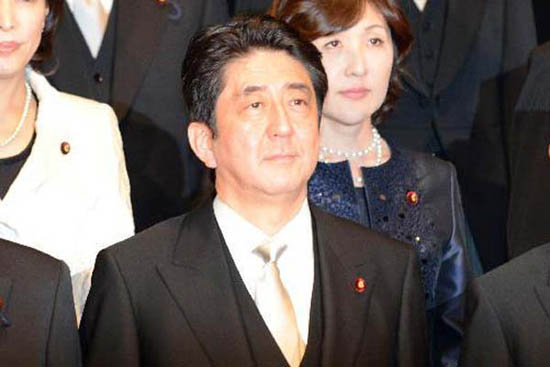
 |
| Photo taken on on Nov. 26 shows Shinzo Abe, leader of the ruling Liberal Democratic Party. (Xinhua/Ma Ping) |
In the just concluded election of the House of Representatives, the Liberal Democratic Party headed by Shinzo Abe won over the Democratic Party with overwhelming advantages. The Liberal Democratic Party would unite with the New Clean Government Party to form the new cabinet and returned back to the political arena. After the Liberal Democratic Party became the ruling party, it is urgent for the Party to clear the "domestic and international troubles" left by the Noda Cabinet. Reviving the economy is the main issue for the Abe Cabinet to soothe the Japanese people and ease the contradictions from various parties.
"Printing more money" is not a good way to deal with deflation.
The Three drives (consumption, investment, and exports) for boosting the economy are not efficient for the Japanese economy to obtain the growth momentum in a short period. Meanwhile, due to the appreciation of the yen after the earthquake disaster and the impact of the domestic recession, Japanese companies began a new round of overseas production transfer; industrial hollowing-out began to show up in Japan, with the unemployment rate reaching 10 percent among the young people. The priority for reviving the Japanese economy is to resolve the deflation and the yen's appreciation.
During the election campaign, Abe proposed that inflation must be created to address the deflation issue, and he has set the "321" goal (the nominal GDP growth rate is 3 percent, the inflation rate 2 percent and the real GDP growth rate 1 percent) for economic recovery.
On December 20 after the election, the Bank of Japan soon announced to issue 10 trillion yen for the purchase of Japanese government bonds, implementing a new round of loose monetary policy. However, as the Bank of Japan announced it after the election, the traditional functions of the Bank of Japan in price stability and its independence from political interference began to be widely questioned. In addition, its issuance date coincided with loose monetary measures announced by the United States and the Europe, which further increased the risk of a new round of crisis resulting from global liquidity floods.
In addition, debt monetization may also shift the burden of the public debt of the government to the financial institutions and the majority of people in Japan. Therefore, in the future, the policy considerations of the Abe Cabinet for the formulation of the inflation goal may have potential risks for a next round of economic crisis.
Depreciation of the yen may have a "side effect".
Logically, Abe's inflation target plan is in consistence with his attempt to lower the exchange rate of Japanese yen. His purpose is to revitalize Japanese exports through the depreciation of Japanese yen, thus stimulating the domestic economy. In general, lowering the exchange rate of yen also meant lowering the market interest rate. Given the fact that the interest rate of the Japanese domestic market was at a lower level, further increasing the money supply can only make Japan go back to "fluidity trap" era when it underwent 10 years ago, unable to cause a substantial impact on lowering the exchange rate of yen. In contrast, given the fact that the external demand began to shrink in the United States and Europe, the depreciation of yen may further expand its trade deficit.
Read the Chinese version: 安倍能否拯救日本经济, source: JFDaily, author: Chen Zilie
We recommend:

Please 'jump' with us to New Year!
Snowflakes-future Olympic stars
Famous female political leaders

Extremely weird world
Severe winter hits the world
What an enjoyable life!














 China sends first oceangoing patrol vessel to South China Sea
China sends first oceangoing patrol vessel to South China Sea


![]()
